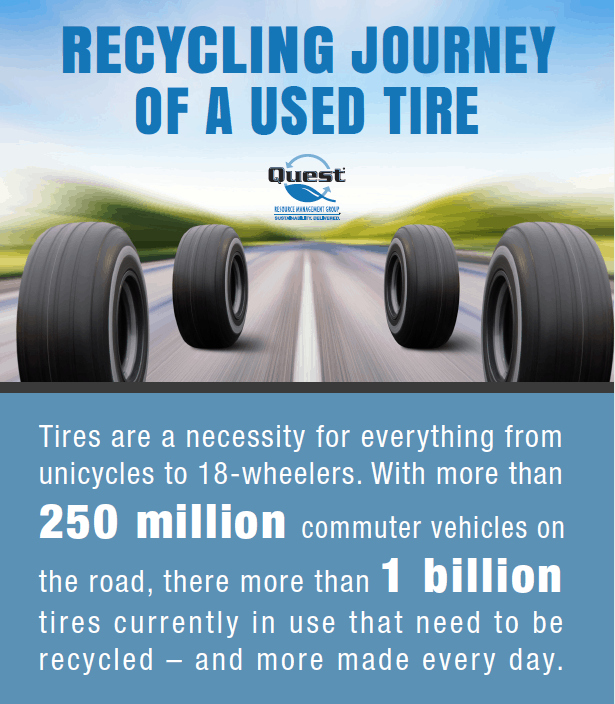Recycling Tires: Where The Rubber Meets The Road
According to the EPA, 290 million used tires are generated annually. Recycling tires keeps tires out of landfills and extends the life of rubber materials used to manufacture the tires. So how are they recycled?
Well, …worn out or damaged tires are removed from vehicles and stored in appropriate containers. Used tires are then picked up based on vendor service intervals and transported to recycling facilities. Scrap tires are then recycled as fuel pellets for example – an alternative source of energy for cement kilns to ignite furnaces.
As outlined by the EPA, ‘Tires produce the same amount of energy as oil and 25% more energy than coal. The oil equivalency of a passenger tire is 7 gallons and the heat content of shredded tires is 10 to 16% higher than that of coal. Tires have a high heating value—each pound of scrap tire rubber is equivalent to 15,000 BTUs of energy.’
What about making new tires from recycled tires you ask? Rubber from scrap tires can be reused as low-volume filler in new tires. Generally, ground rubber constitutes a small percentage of newly manufactured tires. This is due to certain product quality control measures. This is certainly not to say that new tires with recycled content are any less safe than those without. Ground rubber can also be used as a modified asphalt, playground or sport surfacing or even rubber mulch for landscaping.
Speaking of auto recycling, our latest E-guide ‘Are Hybrid Cars Inherently More Recyclable?” explores the subject in greater detail. You can download the E-guide by clicking on the icon below.










